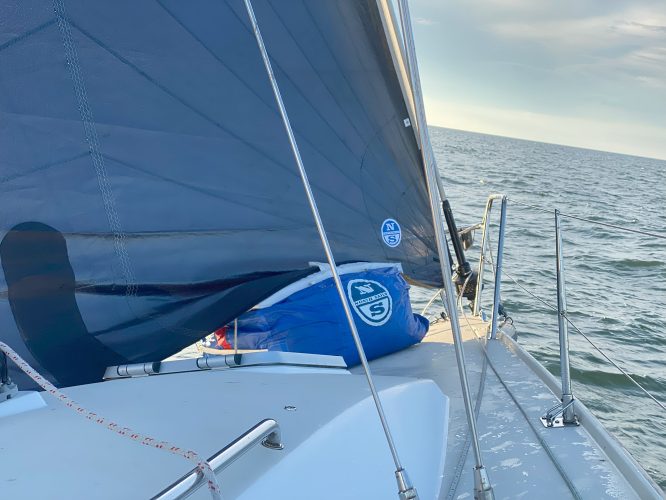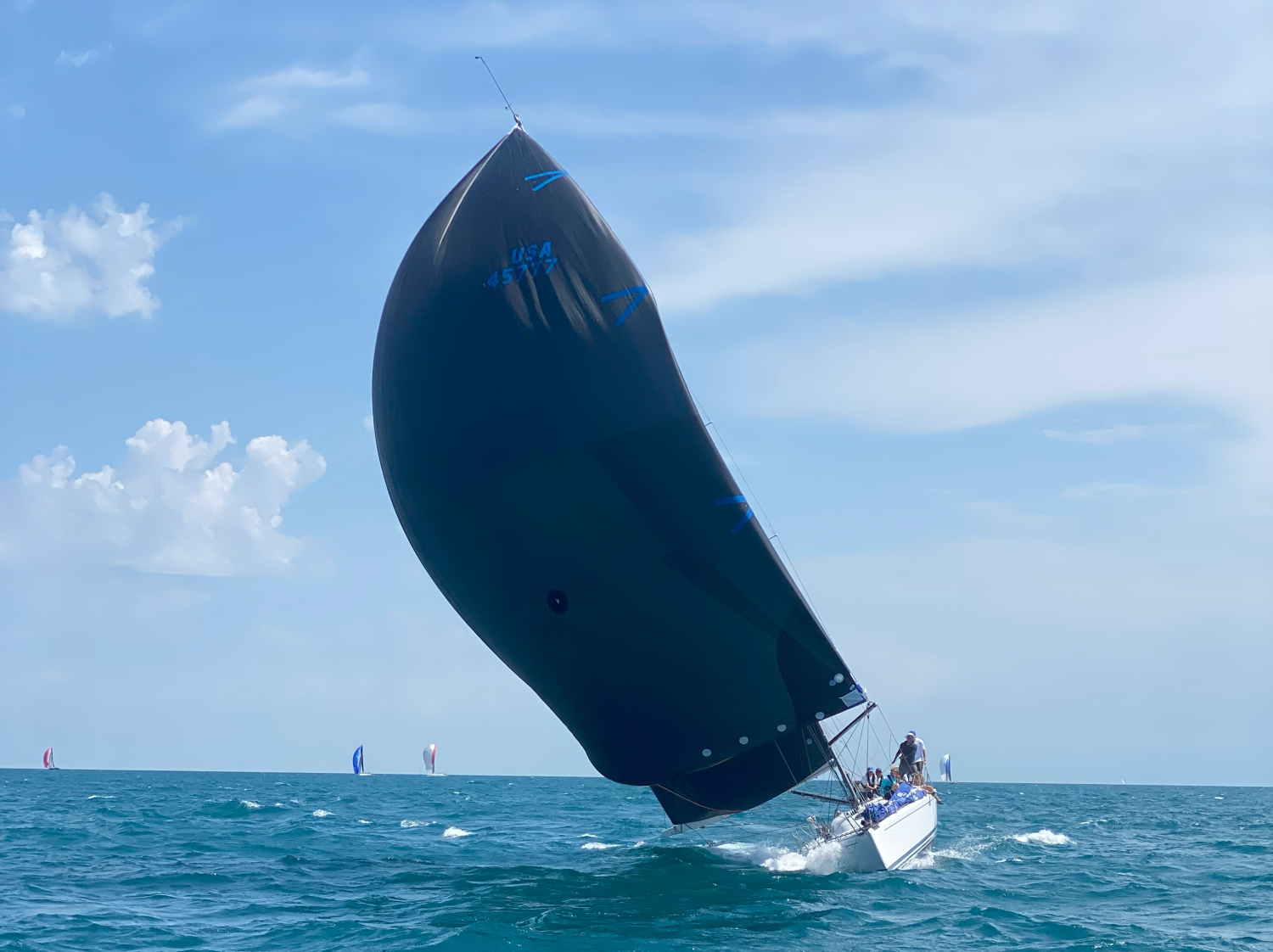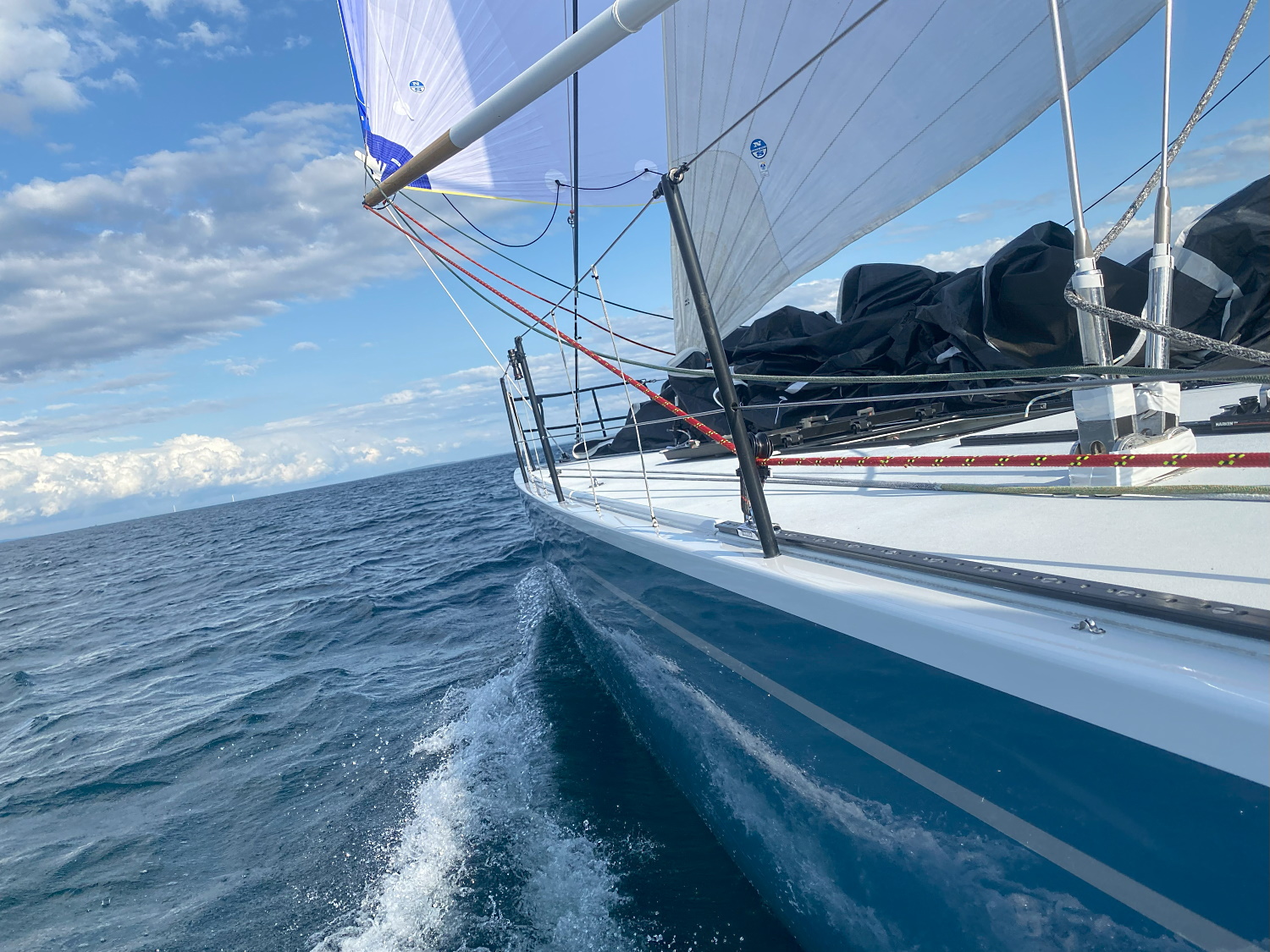Table of Contents
Racing sailboats is a thrilling and challenging sport, but it can also be overwhelming for those new to the game. There are countless different types of sails and it can be difficult to know where to start. In this article, we will be discussing the most important racing sail names that every sailor should know.
We will also discuss the differences between racing and cruising sails, as well as give a brief overview of common offshore sails such as H1, J1, J2, A1, A2, etc. Whether you’re a seasoned racing sailor or just starting out, this guide will provide you with the knowledge and confidence you need to take your racing game to the next level.
Sail Size A Shape Determine A Racing Sail Name
Sail size is a critical component of any racing sailboat, as it plays a major role in determining the speed and performance of the vessel. The size of a sail is dictated by the type of boat and rig, with some masts designed for large genoa headsails and smaller mains, while others have the opposite. It is important for sailors to understand how sail size impacts the overall performance of their boat, particularly when it comes to handicap systems such as PHRF (Performance Handicap Racing Fleet).
When it comes to club racing, sailors must declare their sail sizes to the handicap system. This is where knowing the LP (luff perpendicular) and girth measurements of your sails becomes crucial. Many casual racers may find mistakes on their certificates when they take a close look, so it is important to work with a sailmaker to ensure that these measurements are reported correctly.
Making adjustments to sail size can also have a significant impact on speed and rating. For boats that are chronically underpowered, a bigger genoa can help. On the other hand, if a boat is often overpowered, a smaller jib can help reduce the amount of tipping and result in a more favorable rating. Similarly, a mainsail with a smaller girth than what is listed on the rating certificate may be entitled to a few seconds per mile of rating benefit.
Understanding Racing Sail Shapes
Sail shape is another important factor to consider when it comes to racing. A sail’s shape can become distorted over time, which can lead to a loss of efficiency and speed. To ensure that your sails are in the best shape possible, it’s important to regularly identify the shapes of your current sails and make adjustments as needed.
One of the best tools for identifying sail shape is a camera. Take photos of your sails from as low as possible at the mid-foot, looking up, and share them with your sailmaker. These photos will allow your sailmaker to see the overall draft, leech profile, and other important details of your sails.
As sails age, the overall draft tends to move too far aft, and the leech profile opens up in the high-load middle and upper sections. Both of these changes make the sail less efficient, which can lead to slower speeds. If your photos show this type of distortion, it’s a good idea to start budgeting for a new sail. Starting with the sail that you use the most, such as your genoa, is a good place to begin.
It’s also important to monitor your sails’ shapes over time. Every season, take the same sail shape photos and share them with your sailmaker. This will allow you to see how your sails are changing and make adjustments as needed. If your sailmaker isn’t interested in looking at photos of your existing sails, it may be time to find a new sailmaker.
Common Offshore Racing Sail Names
When it comes to racing, having the right sails for the conditions can make all the difference in the world. As a sailor, it’s important to know the different types of sails available to you, and how to use them to your advantage. One of the most important factors to consider when choosing a sail for racing is whether it’s an offshore sail or not.
Offshore sails are typically made from stronger and more durable materials than inshore sails, and are designed to withstand the harsh conditions of open water. They are also often built with a more aggressive shape, to provide the maximum amount of power and speed.
One of the most common offshore racing sail names you’ll hear is the Heavy 1 (or H1). This is a heavy weather headsail that’s typically used in strong winds and rough seas. It’s made from a strong, durable material, and is designed stability in heavy winds.
Another common offshore sail is the J1. The J1 is a jib that’s often used in medium to heavy winds. It’s designed with a relatively flat shape, to provide a balance of power and stability. The J2 is similar to the J1, but it’s designed for use in even heavier winds.
The A1 and A2 are also common offshore sails. The A1 is a heavy weather spinnaker that’s typically used in strong winds and rough seas. It’s made from a strong, durable material, and is designed with a deep draft to provide maximum power and stability in heavy winds. The A2 is similar to the A1, but it’s designed for use in even heavier winds.
When choosing offshore sails, it’s important to consider the conditions you’ll be sailing in, as well as your own skill level and the capabilities of your boat. Be sure to consult with a sailmaker or other experienced sailor to help you make the right choice. With the right offshore sails, you’ll be well-equipped to take on any challenge that the open water may throw your way.
Final Thoughts
In conclusion, understanding sail size and shape is crucial for club racing sailors looking to optimize their performance on the water. By knowing the LP and girth measurements of your sails, as well as keeping an eye on their shape over time, you can make informed decisions about your sail inventory and ensure that you have the right sails for the job.
It is important to work with a sailmaker who can help you understand these concepts and make the necessary adjustments to your sails. They will be able to advise you on the best sizes and shapes for your boat and rig, as well as any changes that may be needed as your sails age.
In addition, being familiar with common offshore racing sail names such as H1, J1, J2, A1, A2 etc., and understanding how they are typically used in different types of races and conditions can also be beneficial to your performance.
By following these guidelines, you can ensure that your sails are optimized for performance, and you can enjoy the thrill of club racing to the fullest. So, get out there on the water and let the wind take you to the finish line!
And if your sails start to look more like trapezoids than triangles, just head over to SailTrader and pick up some new ones. We’re the largest marketplace exclusively dedicated to sailboats, so you’re sure to find any type of sail you’re looking for!



